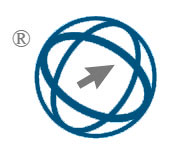Secure Power Management in Wireless Sensor Networks for Power Monitoring Using Deep Reinforcement Learning
Abstract
Batteries power the sensors that make up wireless sensor networks (WSNs), which have recently seen extensive usage in healthcare, science, and the military. The question of how to increase the lifespan of WSNs is therefore a significant one. Cutting down on the amount of power that sensors use is one approach. On the other side, power management is a great way to cut down on their energy use. However, this can only be accomplished if we think about the whole WSN process, from design to communication. When the WSN is under assault from both outside and within, power management could also spiral out of control. In order to address the energy issue of a WSN and extend the operational duration of its sensor nodes and coordinators, we presented a secure energy consumption management structure in this article. We called it Secure Power Management (SPM). Regardless of whether it's an inside assault or some other kind of hostile attack, the SPM will still work. When not in use, it effectively puts WSN nodes into sleep mode and wakes them back when needed using Deep Reinforcement Learning (DRL). Nodes use less power while operating in this mode. To further restrict the power use of WSN nodes, a token-based Elliptic Curve Cryptography (ECC) control policy is also created. The SPM continues to significantly lower power usage by up to 20.01% comparing to the conventional power management system, even when subjected to hostile or insider assaults, according to our simulated findings. Efficiency in power consumption by nodes, reliability in packet transmission and network longevity, and security of communication between nodes are key metrics that define the effect of our concept using DRL and SPM models and improved energy efficiency by 15% than existing works.
Full Text:
PDFDOI: https://doi.org/10.31449/inf.v49i19.7125

This work is licensed under a Creative Commons Attribution 3.0 License.









